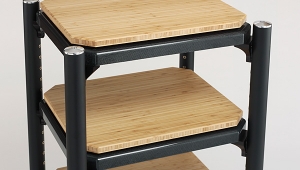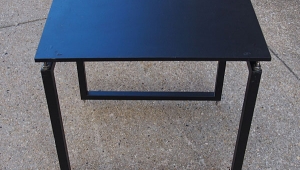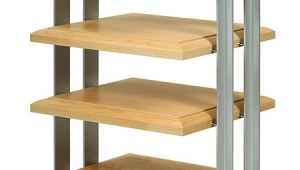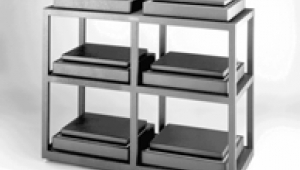| Columns Retired Columns & Blogs |
this is a wonderful thing to know "Lloyd backs up his approach by providing comparative test results of GPA stands, conventional metal stands, and air-bladder shelves, measured on a shaker table. GPA claims that while air-suspension devices provide an 80% reduction in vibration over conventional shot-filled metal shelving, the Monaco reduces vibration even further" I want to thank you for sharing this information. More power
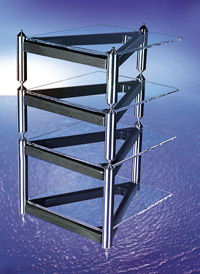 Into this cacophony of competing claims and products stepped Alvin Lloyd and his company, Grand Prix Audio. Lloyd's background includes 20 years of involvement in professional motor sports, including a stint as vice president of operations for Swift Engineering, the only American manufacturer of CART racing-car chassis. After founding GPA, Lloyd drafted more motor-sports engineering talent in the form of Henry Wolf and Tom Huschilt. Wolf worked as an engineering consultant for a CART series team and was responsible for shaker dyno research, which involves determining the natural resonant frequencies and stiffnesses of all aspects of a car and its tires. Prior to joining Swift, Huschilt, a suspension engineer, worked at Newman Haas Racing, overseeing suspension design and research for such drivers as Nigel Mansell and Mario and Michael Andretti. There, Huschilt was responsible for co-designing the first American-built car to win the Indianapolis 500 in more than 20 years. It would appear that these gents understand the physics of vibration.
Into this cacophony of competing claims and products stepped Alvin Lloyd and his company, Grand Prix Audio. Lloyd's background includes 20 years of involvement in professional motor sports, including a stint as vice president of operations for Swift Engineering, the only American manufacturer of CART racing-car chassis. After founding GPA, Lloyd drafted more motor-sports engineering talent in the form of Henry Wolf and Tom Huschilt. Wolf worked as an engineering consultant for a CART series team and was responsible for shaker dyno research, which involves determining the natural resonant frequencies and stiffnesses of all aspects of a car and its tires. Prior to joining Swift, Huschilt, a suspension engineer, worked at Newman Haas Racing, overseeing suspension design and research for such drivers as Nigel Mansell and Mario and Michael Andretti. There, Huschilt was responsible for co-designing the first American-built car to win the Indianapolis 500 in more than 20 years. It would appear that these gents understand the physics of vibration. 
